6. Dog Day Afternoon (Sidney Lumet, 1975)
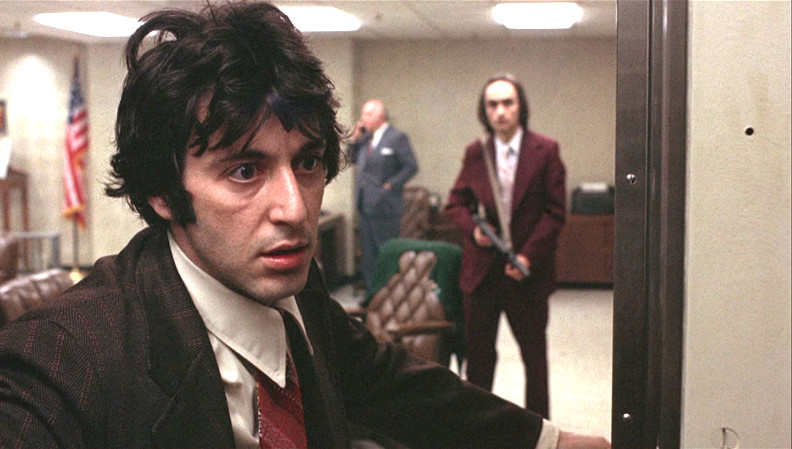
Al Pacino stars as a desperate man who attempts to rob a bank to pay for his lover’s gender reassignment operation. What seemed like a simple and harmless plan, quickly takes a drastic turn when everything that could possibly go wrong does. The script was written by Frank Pierson and based on the Life magazine article, “The Boys in the Bank”, by P.F. Kluge and Thomas Moore. The article documented the 1972 robbery/hostage situation involving John Wojtowicz and Salvatore Naturile. The cast includes John Cazale, James Broderick and Charles Durning.
Sidney Lumet was the perfect choice to direct the film. Although he never intended them to be, Lumet’s films were often socially relevant, and the material for this film was far more than a heist film. During a stand-off between the bank robbers and the police, the robbers reveal their socially-charged motive behind their actions, in the iconic “Attica” scene. Both Pacino and Cazale give a truly naturalistic performance that audiences couldn’t help but sympathise with. There’s a level of despair when both characters understand they’ve entered a dangerous situation.
Lumet sets the film mostly inside the bank, much Spike Lee’s Inside Man or Lumet’s 1957 drama 12 Angry Men. The limited setting adds to the suspenseful drama as the bank becomes stuffy and claustrophobic. The film was nominated for 6 Oscars including best actor for Pacino, best director and best picture. Pierson won for best original screenplay. Dog Day Afternoon remains an all-time classic due to the excellent performances, the tight screenplay, candid social context of the time, and Lumet’s down-to-earth direction.
7. Good Time (Josh & Benny Safdie, 2017)
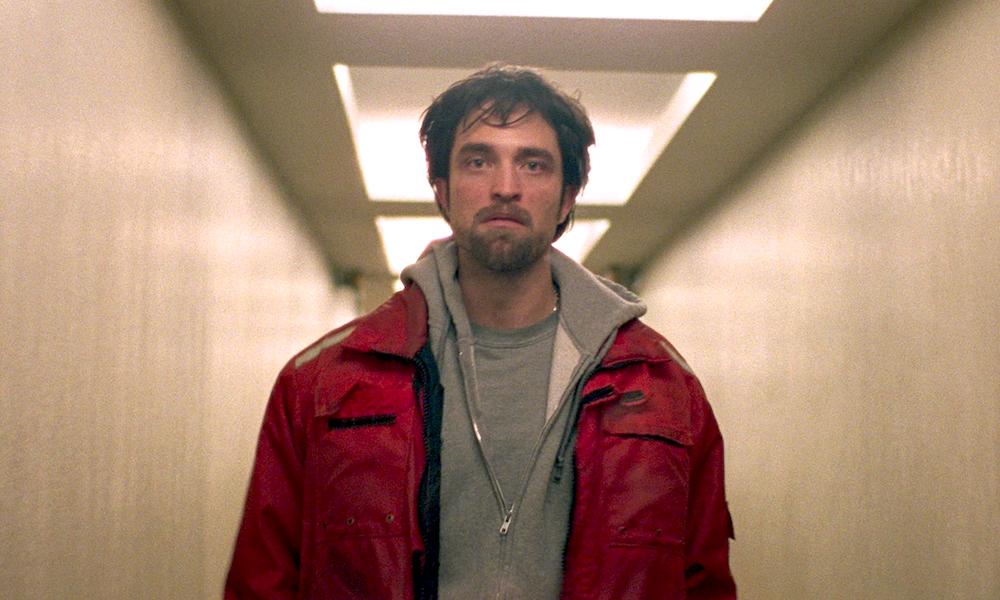
A bank robber (Robert Pattinson) launches himself into a twisted night-long odyssey through the dark New York City underworld to get his brother (Benny Safdie) out of jail. The film was written by Josh Safdie and Ronald Bernstein, and directed by Josh and Benny Safdie. The film was well received critically, especially Pattinson’s performance and the Safdie brothers’ direction.
Pattinson stars as the small-time crook, Connie Nikas, who seems to be cut from the same cloth as Al Pacino’s bank robbing character in Dog Day Afternoon. There’s a sense of regret in his actions, yet his motivations, whether good or not, are what keep him and the film going forward. Benny Safdie also delivers a strong performance as Connie’s developmentally-disabled brother, Nick.
The film doesn’t hold back on its anxious night-long journey through the mysterious and, at times, trippy underworld of New York City. Good Time is a modern iteration of films such as The Warriors, Taxi Driver and Escape from New York, where we tag along with a character through New York’s violent and gloomy streets. The film’s score, composed by electronic musician Oneohtrix Point Never, adds to the advancing and rushed mindset of Connie, as he’s constantly met with bizarre situations yet keeps pushing forward.
8. Mikey and Nicky (Elaine May, 1976)
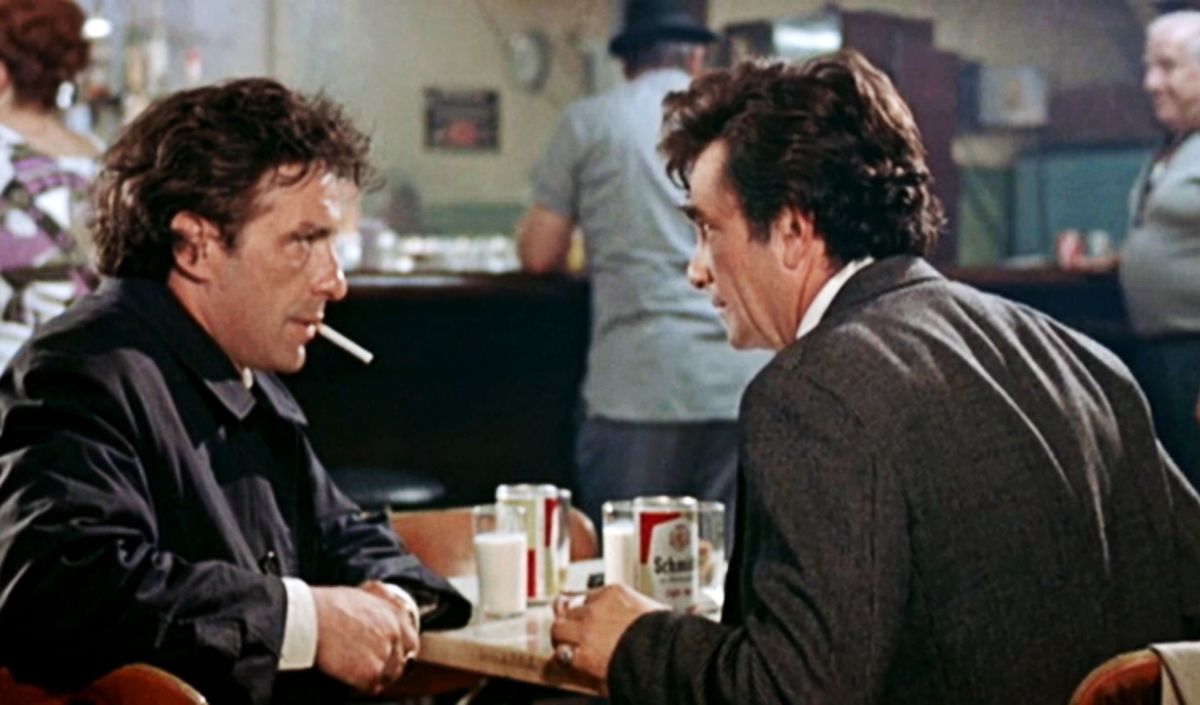
Mickey and Nicky is perhaps one of the most underrated films of the 1970s, having been written and directed by Hollywood’s most neglected filmmaker, Elaine May. The film stars John Cassavetes as Nicky, a desperate man on the run from the Philadelphia mob. With nowhere else to go, he turns to his old friend Mikey, played by Peter Falk. At the time, May was known for her comedy, having been a comic herself. The film has pockets of humour mixed in with its candid dialogue and sudden bursts of violence.
Cassavetes and Peter Falk had already worked with each other on Cassavetes’ films such as Husbands and A Woman Under the Influence. Their professional friendship and respect for each other, as well as the material, is clear throughout the film as both actors are in complete synchronisation. May added to this, trusting them to improvise and bounce off each other. May shot 1.4 million feet of film to capture every inch of realism and performance she could.
The film explores friendship through cynical eyes. Mikey and Nicky were friends once, best friends from childhood even, but as time went on and their success differed, they became different people. Nicky’s manic paranoia is contagious as he roams around the film, never being able to trust anyone or any situation. Mikey on the other hand is relentless. His willingness to help, although being tested in many scenes, is always there.
The film explores mistrust and suspicion, which didn’t differ much from what was happening behind the scenes. May was in a constant battle with Paramount Pictures regarding final cut, running over budget and overall control of the project. It went so far to the extent of May having to hide important reels of the film in her husband’s friend garage in Connecticut.
9. Phone Booth (Joel Schumacher, 2002)
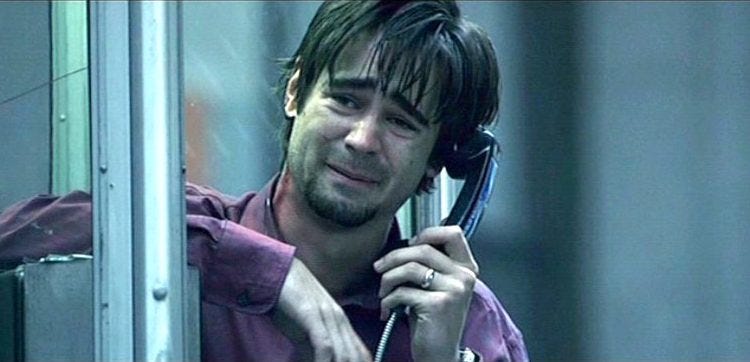
Joel Schumacher directs this nail-biting suspense thriller that takes place almost entirely in and around a phone booth. Publicist Stuart Shepard (Collin Farrell) innocently picks up a call in a New York City phone booth. What seems like a prank at first then takes a dark turn when the caller assures Stuart that he has a sniper aimed on him, and if he hangs up, he’s dead. The film also includes Forest Whitaker and Katie Holmes.
The script was written by one of the most influential B-movie/exploitation filmmakers, Larry Cohen. The mind behind The Stuff, The Godfather of Harlem and Q: The Winged Serpent. Cohen had already pitched the initial idea for Phone Booth to Hitchcock in the 1960s, and although the master of suspense liked the idea, it never went forward. Cohen then revisited the script in the late 90s.
Like many action thrillers of the early 2000’s, the film succeeds due to its pacing. It’s sleek, rapid and lacks any moment of flatness. Although Stuart’s character isn’t completely relatable to most people, the situation he finds himself captures the audience’s attention so much that it seems as if they are too trapped in that phone booth. The ongoing dialogue with the antagonist only known as “the caller”, is reminiscent of Die Hard with a Vengeance, as both films have their protagonist having to submit to their enemy over the phone, with disastrous consequences.
The film’s limited location and dramatic threat almost puts it in the same ball park as earlier thrillers such as Die Hard, Speed and Cliffhanger, but with an even faster pace and thrilling atmosphere.
10. Funny Games (Michael Haneke, 1997)
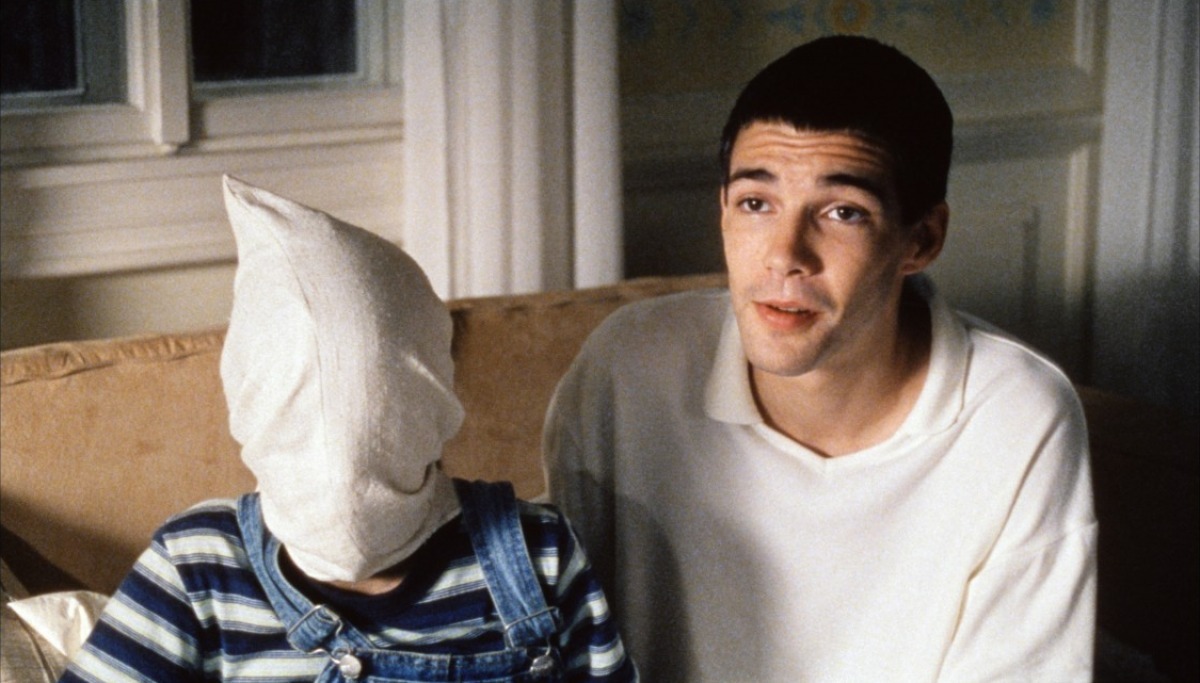
Two young men, Paul (Arno Frisch) and Peter (Frank Giering), keep a family hostage in their vacation cabin and force them to play sadistic games for their own entertainment. The minimalist premise is not original as there’s been a number of home invasion movies in the hands of psychotic characters. What makes Michael Haneke’s Funny Games probably one of the most disturbing home invasion movies of all time, is his twist on the genre.
The two young men are polite and well dressed. The leader of the two, Paul, appears to be quite intelligent. These are not drug fuelled, money-crazy lunatics. They’re the type of young men you wouldn’t think twice of when allowing them into your house for spare eggs. Haneke blurs the lines between reality and fiction as he plays with time frames and has his antagonist Paul occasionally break the fourth wall. He interacts with the audience, winks at them, not only to have them feel like they’re in on the invasion, but also to subvert the genre’s conventions.
Haneke has stated that he didn’t intend to make Funny Games a horror, but instead a statement on violence in the media. He wanted to create an extremely violent yet pointless film. The most disturbing aspect of the film is the lack of motive that the two young men appear to have. At one point the distressed father of the family asks one of the boys why they’re doing this, and Peter chillingly responds, “why not?”.